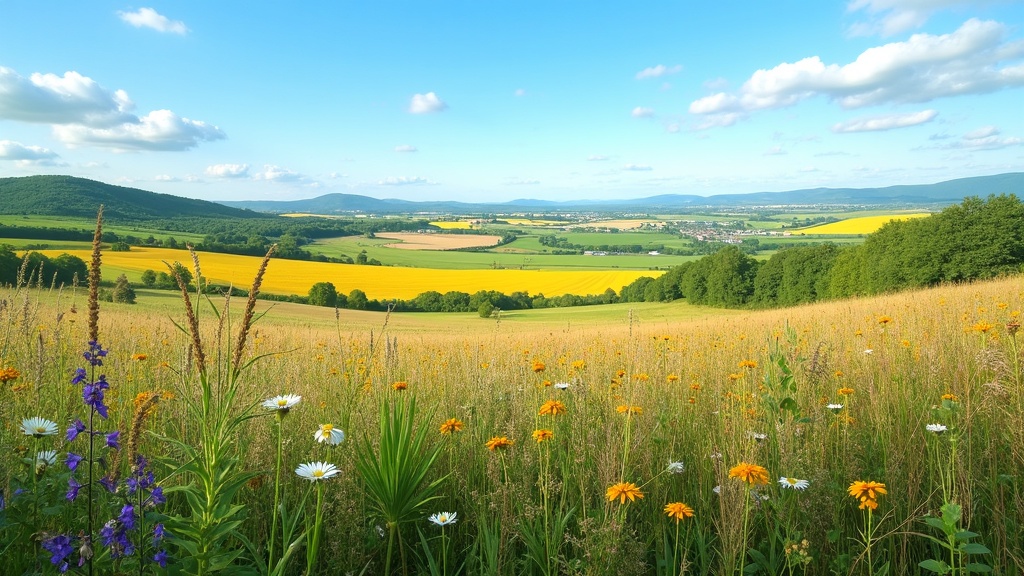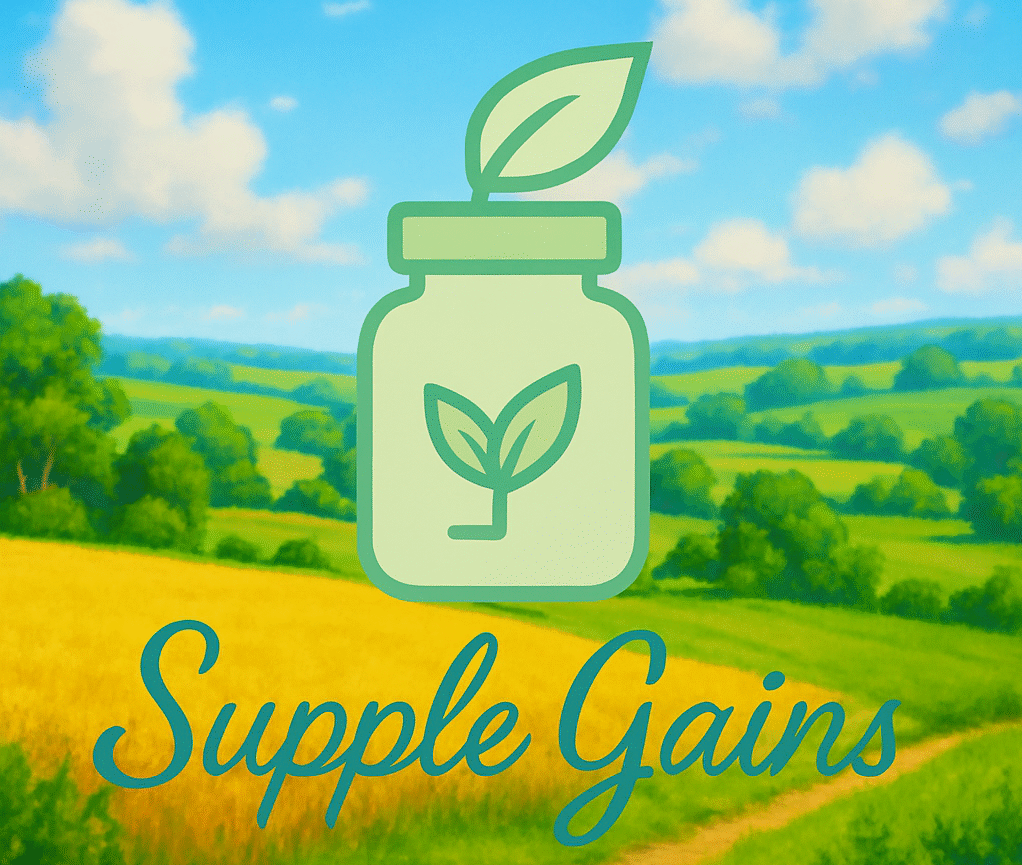Eating a plantbased diet is getting attention not only for health perks, but also for its link to protecting the planet’s biodiversity.
The foods we choose can shape landscapes, wildlife habitats, and even the very survival of countless species.
A lot of people don’t realize how closely the food on our plate and the natural world are actually connected.
I’m taking a closer look at how plantbased diets can play a really important part in preserving biodiversity around the globe.

Why Biodiversity Matters in Our Food System
Biodiversity is the variety of life on earth, including all plants, animals, bacteria, and fungi.
It’s what keeps ecosystems functioning, cleans our water, forms healthy soils, and even pollinates the crops we rely on.
When biodiversity declines, these systems start to unravel, making our world less resilient to climate change, pests, and disease.
Our food systems are a big driver of biodiversity loss worldwide. Industrial agriculture, with its focus on largescale monocultures and heavy animal farming, clears huge stretches of forest, destroys wetlands, and pollutes rivers.
These changes force native plants and animals out, shrinking both their numbers and the variety of life in an area, making the environment less lively and sustainable overall.
How PlantBased Diets Affect Biodiversity
Plantbased diets tend to use less land, water, and energy compared to diets heavy in animal products.
Livestock farming takes up about 77% of global agricultural land, but produces only 18% of the world’s calories, according to the Food and Agriculture Organization (FAO).
The demand for animal feed crops, like soy and corn, drives deforestation in places such as the Amazon and can wipe out habitats critical to many species.
Swapping animalbased foods for plants directly shrinks the need for these resource intensive systems.
Growing vegetables, grains, legumes, nuts, and seeds usually means less clearing of wild areas, less pressure on endangered species, and fewer pesticides running off into lakes and rivers.
When you choose a lentil stew instead of a beef burger, you’re helping keep forests standing and rivers cleaner.
Besides resource use, plantbased diets introduce more crop diversity on farms.
With animal agriculture, large areas are used for just a few crops while raising cattle or poultry.
In contrast, eating more fruits, vegetables, whole grains, and legumes asks farmers to grow a greater mix of crops.
This kind of variety feeds more pollinators, helps birds thrive, and keeps pest populations in check, resulting in a stronger, more balanced ecosystem around the farm.
Getting Started With A PlantBased Diet For Biodiversity
Transitioning towards a plantbased way of eating doesn’t have to be tough, and every small step can add up.
Here are some easy ways to get started while making a difference for wildlife and the larger ecosystem:
- Go For Variety: Pick a wide range of plant foods. Eating different types of fruits, veggies, and grains supports more diverse farming, which helps soil health and local wildlife.
- Try Meatless Meals: Even swapping in one or two plantbased meals a week helps cut down the pressure animal farming places on the planet.
- Choose Local And Seasonal: Buying from local farmers who grow lots of crops boosts regional biodiversity and reduces how far your food travels. This supports your local economy and helps keep lesser known, unique plant species in circulation.
- Support Organic Or Regenerative Farms: These approaches use fewer chemicals and care for the land in ways that encourage pollinators and birds to thrive. They also usually promote soil health and reduce harmful runoff that can damage aquatic habitats.
Another simple step is to learn some new recipes that put beans, lentils, root veggies, and ancient grains at the center of the plate.
Join community cooking workshops or share plantbased potluck meals with friends; food tastes better when enjoyed together, and sharing dishes might inspire someone else to try out biodiversityfriendly eating, too.
Key Challenges and How to Find Your Way
Making the switch toward plantbased eating can run into a few bumps, both on a personal and global level.
Recognizing these helps keep the bigger picture in mind and stay motivated to make thoughtful choices, whether it’s at a restaurant or the farmers market.
- Access and Affordability: Not everyone has easy or affordable access to a wide range of plant foods. Community gardens, farmers markets, and home growing can help, but bigger system changes are also needed so everyone can benefit from fresh plant foods.
- Food Traditions: In some cultures, animalbased foods are a big part of tradition and identity. Finding plantbased twists on these dishes keeps connections to heritage while leaning into a more planetfriendly approach. Sharing recipes across communities can open up new ways of enjoying favorite flavors.
- Food Labels and Information: Knowing what foods support biodiversity can be confusing. Look out for certifications like organic, Fair Trade, or regenerative, and check if producers share info about local or diverse farming practices. Learning where your food comes from gives you more control over your environmental impact.
- Global Demand: As some countries get wealthier, diets often become more meat heavy. Spreading awareness of plantbased benefits and sharing tasty recipes can help keep the trend toward plant foods moving forward.
Access and Affordability
Where you live has a lot to do with what’s on your plate.
In some areas, fresh produce isn’t widely available or affordable.
Supporting better food access—like getting involved with local food initiatives, growing your own herbs, or participating in communitysupported agriculture (CSA)—helps bridge this gap.
Some organizations, such as the World Resources Institute, offer advice and resources for eating sustainably even on a tight budget.
Improving infrastructure and encouraging grocery stores and markets to stock diverse produce yearround can also help neighborhoods eat more plantbased without breaking the bank.
Volunteers and nonprofits are often behind gardens that supply food pantries and schools, giving even more people opportunities to try plantbased meals with fresh ingredients.
Food Traditions
Family traditions and cultural snacks often revolve around animal products.
Switching up those staples can be tricky. What I’ve found is that you don’t have to give these up completely; experimenting with plantbased versions lets you keep the familiar flavors in new, exciting ways without losing your cultural roots.
Community cookoffs or food swaps are a fun way to stumble upon new plantpowered takes on classics.
Local chefs are often experimenting in these spaces, bringing even more ideas for biodiversityfriendly plantbased meals to the table.
Food Labels and Information
Deciphering labels in the grocery store isn’t everyone’s favorite hobby.
Focusing on whole foods and looking for clear labeling can push producers to care more about growing methods.
Apps like Seafood Watch or EWG’s Food Scores give you extra info if you’re ever on the fence about a purchase.
Reading up on your favorite brands or checking in with local producers at the farmers market makes it much easier to know who is putting biodiversity at the front of their practice.
Global Demand
As more folks around the world want highprotein diets, rising demand for animalbased foods could increase pressure on land and species.
Sharing knowledge about easy and satisfying plantbased meals at local events, workplaces, or online helps spread the word and keeps people inspired.
In schools and youth programs, teaching about plant diversity links healthy eating with caring for ecosystems, setting up good habits for the next generation.
PlantBased Ingredients That Support Biodiversity
Not all plantbased foods are the same when it comes to their effect on the natural world.
Picking ingredients that also encourage sustainable agriculture can give your impact a boost:
- Ancient Grains: Millet, quinoa, amaranth, and sorghum are super resilient and need fewer pesticides. They’re a great way to reduce the monoculture effect of wheat, corn, and rice while offering plenty of flavor and nutrition.
- Pulses and Legumes: Beans, lentils, peas, and chickpeas add nitrogen to the soil, helping reduce the need for chemical fertilizers and supporting a whole range of soil life. These staples are affordable and can be used in everything from curries to soups and salads.
- Perennial Vegetables: Crops like asparagus, artichokes, and perennial herbs live for years, which stops the soil from being tilled up each planting season and protects microhabitats. Planting or buying perennial veggies supports farmers making the switch to sustainable growing.
- Diversely Grown Produce: Shopping at farmers markets or joining a CSA brings more varieties to your kitchen and rewards growers who care for biodiversity. The more variety you welcome into your meals, the greater your positive influence on the world around you.
Supporting biodiversity can also mean discovering forgotten or heirloom varieties of fruits and vegetables.
These often have unique flavors and colors and are adapted to your particular region.
Choosing these boosts local agriculture and keeps important genetic traits alive.
Frequently Asked Questions
Readers often bring up questions about the real impact of plantbased eating. Here’s what you might be wondering too:
Question: Does switching to plantbased eating really make a difference for endangered species?
Answer:
Yes, lowering animalbased food demand can reduce habitat loss and give endangered species more room to exist.
Less deforestation for pasture or feed crops equals more land for wildlife.
Every time you pick a veggie burger or a bean chili instead of a steak, you’re helping expand spaces where creatures like jaguars, orangutans, and lesserknown insects can survive.
Question: Are plantbased diets always better for biodiversity than all types of animal farming?
Answer:
Not always. Traditional grazing, like that done by some pastoralist cultures, can help manage landscapes and even maintain habitats for rare plants and insects.
The key is how food is produced, not just what is eaten, and supporting smallscale, mindful producers who care for the land makes a big difference.
Question: What about plantbased foods like soy—do they hurt biodiversity?
Answer:
Largescale soy farms for animal feed can be hard on habitats, especially when forests are cleared.
When soy is grown for direct human food or by farmers using ecofriendly methods, it’s much better for biodiversity.
To reduce your impact, choose organic, nonGMO, or locally grown soy when possible, and try other protein sources like lentils and peas.
Final Thoughts: Food Choices That Matter
Switching to—or even just leaning more toward—a plantbased diet helps lower pressure on wild lands and gives nature more breathing room.
Supporting a mix of plant foods, especially those grown by local or organic farmers, can keep fields buzzing with pollinators and soils full of life.
Balancing what’s good for people and what’s better for the planet doesn’t need to be a chore, and exploring new plantbased dishes can be delicious, too.
Every plantbased meal is a chance to show some real love for biodiversity right from the dinner table. The small choices we make each day add up, giving the environment and future generations a better shot at thriving.
